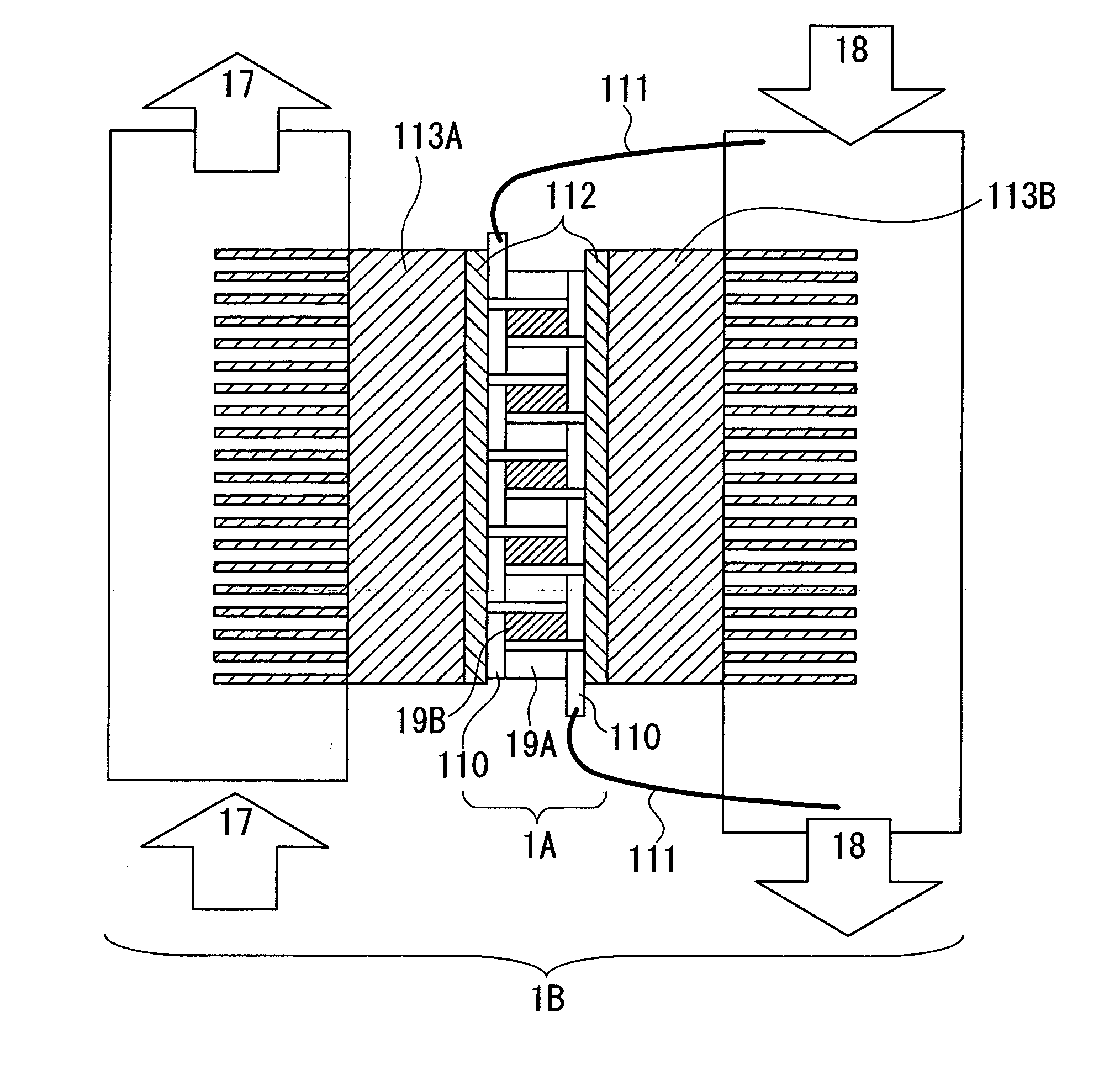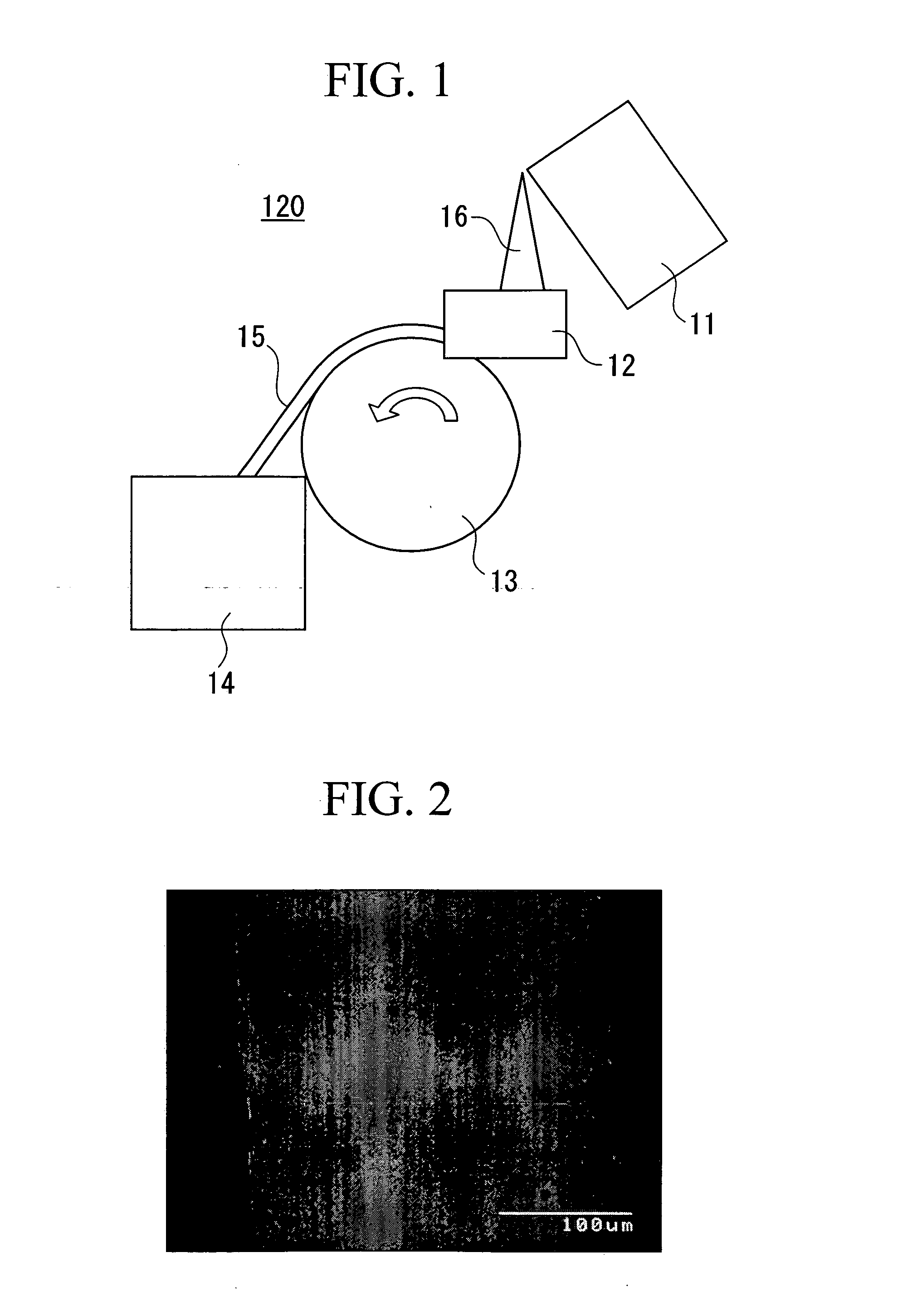Process for producing thermoelectric semiconductor alloy, thermoelectric conversion module, thermoelectric power generating device, rare earth alloy, producing process thereof, thermoelectric conversion material, and thermoelectric conversion system using filled skutterudite based alloy
a technology of thermoelectric semiconductor alloy and thermoelectric conversion module, which is applied in the direction of thermoelectric device manufacturing/treatment, thermoelectric device, solid-state diffusion coating, etc., can solve the problems of increasing cost, difficult design, and a great deal of effort, and achieves easy and simple production, effective measure of global warming, and the effect of power generation efficiency
- Summary
- Abstract
- Description
- Claims
- Application Information
AI Technical Summary
Benefits of technology
Problems solved by technology
Method used
Image
Examples
example 1
[0204] Sponge Ti (purity: 99 mass % or more), sponge Zr (purity: 99 mass % or more), electrolytic Ni (purity: 99 mass % or more) and Sn metal (purity: 99.9 mass % or more) were weighed to give a half Heusler-type (TixZr1−x)NiSn composition after casting, and high-frequency melted at a temperature up to 1,700° C. under 0.1 MPa in an Ar atmosphere. Thereafter, by using a strip casting apparatus 120 shown in FIG. 1, the molten metal was poured from the crucible 11 through the tundish 12 on the water-cooled copper roll 13 rotating at a spherical velocity of 0.9 m / sec to produce an alloy flake 15, and the alloy flake was recovered in the recovery box 14. The average thickness of the alloy flake 15 was 0.25 mm. In this casting, the cooling rate was estimated to be about 7×102° C. / sec.
[0205]FIG. 2 is a reflection electron microphotograph showing the cross section of the alloy obtained as above. As seen from this, the alloy flake has a uniform structure in the entire region. Also, it is kn...
example 2
[0212] Electrolytic iron (purity: 99 mass % or more), ferrovanadium (Fe-V, JIS FV 1, V purity: 87 mass %) and Al metal were weighed to give a Heusler-type Fe2(VxTi1−x)(AlySi1−y) (0120 shown in FIG. 1, the molten metal was poured from the crucible 11 through the tundish 12 on the water-cooled copper roll 13 rotating at a spherical velocity of 0.9 m / sec to produce an alloy flake 15, and the alloy flake was recovered in the recovery box 14. The average thickness of the alloy flake 15 was 0.28 mm. In this casting, the cooling rate was estimated to be about 7×102C. / sec.
[0213]FIG. 5 is a backscattered electron image showing the cross section of the alloy obtained, and FIG. 6 is a powder X-ray diffraction pattern of the alloy. As seen from these, a Heusler alloy comprising a single phase can be obtained by the quench-solidification method. The ratio of strongest peak of the Fe2VAl was 100%.
[0214] This alloy was ground to 200 μm or less by a stamp mill and then pulverized at 0.5 MPa in a ...
reference example 1
[0227] La metal was used as the rare earth metal, and this metal and additionally electrolytic iron and Sb were weighed to give a stoichiometric composition of LaFe4Sb12, melted at a temperature up to 1,400° C. under 0.1 MPa in an Ar atmosphere. Thereafter, the molten metal was cast to produce an alloy flake having a thickness of 0.28 mm by using a strip casting apparatus shown in FIG. 1. At this time, the molten metal was poured on the water-cooled copper roll rotating at a peripheral velocity of 0.92 m / sec under the conditions such that the crosswise width was 85 mm and the pour rate was 150 g / sec. In this casting, the cooling rate was estimated to be about 1×103° C. / sec.
[0228] When the produced alloy flake was ground and measured by powder X-ray diffraction, as shown in FIG. 9, the peak of Sb2Fe or Sb was scarcely observed. The abundance ratio of the filled skutterudite phase was calculated from this Figure, as a result, 98% or more was being occupied by the LaFe4Sb12 filled sku...
PUM
| Property | Measurement | Unit |
|---|---|---|
| Temperature | aaaaa | aaaaa |
| Fraction | aaaaa | aaaaa |
| Percent by mass | aaaaa | aaaaa |
Abstract
Description
Claims
Application Information
 Login to View More
Login to View More - R&D
- Intellectual Property
- Life Sciences
- Materials
- Tech Scout
- Unparalleled Data Quality
- Higher Quality Content
- 60% Fewer Hallucinations
Browse by: Latest US Patents, China's latest patents, Technical Efficacy Thesaurus, Application Domain, Technology Topic, Popular Technical Reports.
© 2025 PatSnap. All rights reserved.Legal|Privacy policy|Modern Slavery Act Transparency Statement|Sitemap|About US| Contact US: help@patsnap.com



